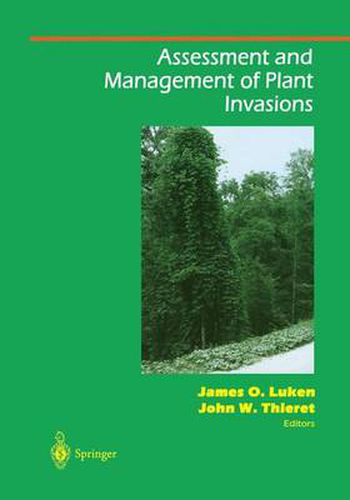Readings Newsletter
Become a Readings Member to make your shopping experience even easier.
Sign in or sign up for free!
You’re not far away from qualifying for FREE standard shipping within Australia
You’ve qualified for FREE standard shipping within Australia
The cart is loading…






This title is printed to order. This book may have been self-published. If so, we cannot guarantee the quality of the content. In the main most books will have gone through the editing process however some may not. We therefore suggest that you be aware of this before ordering this book. If in doubt check either the author or publisher’s details as we are unable to accept any returns unless they are faulty. Please contact us if you have any questions.
Biological invasion of native plant communities is a high-priority problem in the field of environmental management. Resource managers, biologists, and all those involved in plant communities must consider ecological interactions when assessing both the effects of plant invasion and the long-term effects of management. Sections of the book cover human perceptions of invading plants, assessment of ecological interactions, direct management, and regulation and advocacy. It also includes an appendix with descriptive data for many of the worst weeds.
$9.00 standard shipping within Australia
FREE standard shipping within Australia for orders over $100.00
Express & International shipping calculated at checkout
This title is printed to order. This book may have been self-published. If so, we cannot guarantee the quality of the content. In the main most books will have gone through the editing process however some may not. We therefore suggest that you be aware of this before ordering this book. If in doubt check either the author or publisher’s details as we are unable to accept any returns unless they are faulty. Please contact us if you have any questions.
Biological invasion of native plant communities is a high-priority problem in the field of environmental management. Resource managers, biologists, and all those involved in plant communities must consider ecological interactions when assessing both the effects of plant invasion and the long-term effects of management. Sections of the book cover human perceptions of invading plants, assessment of ecological interactions, direct management, and regulation and advocacy. It also includes an appendix with descriptive data for many of the worst weeds.